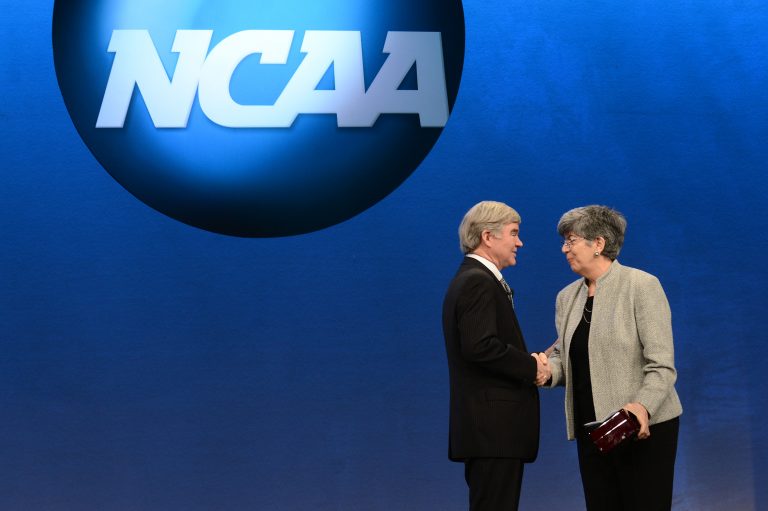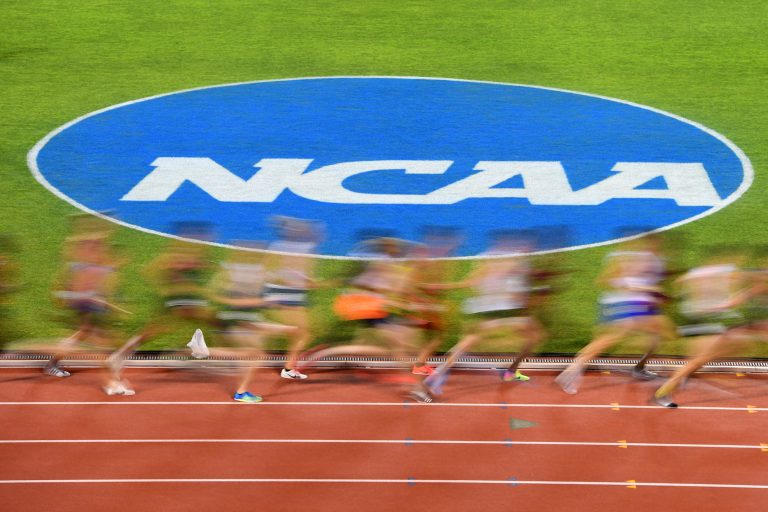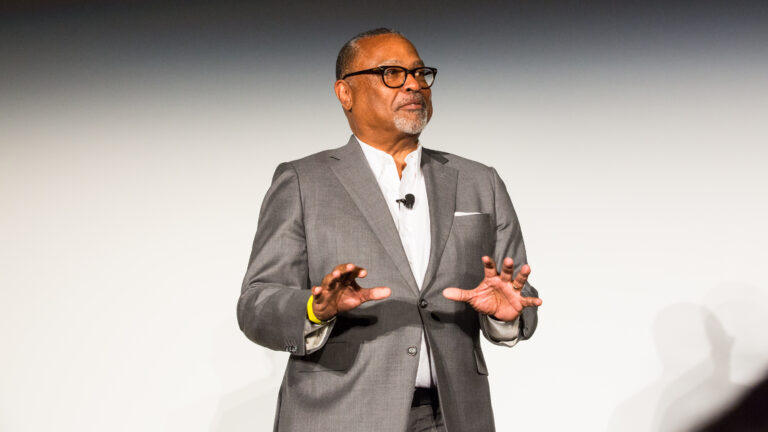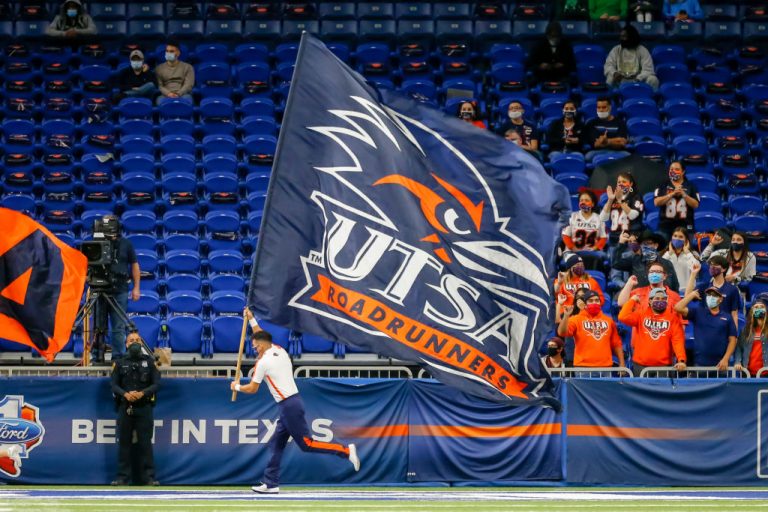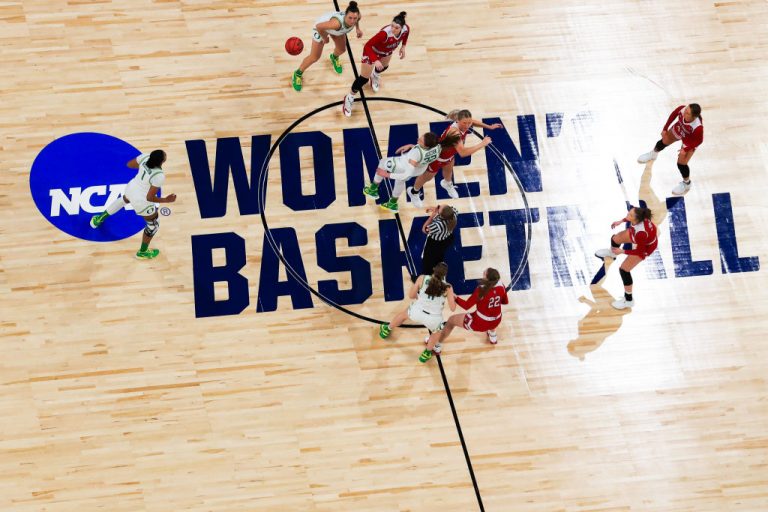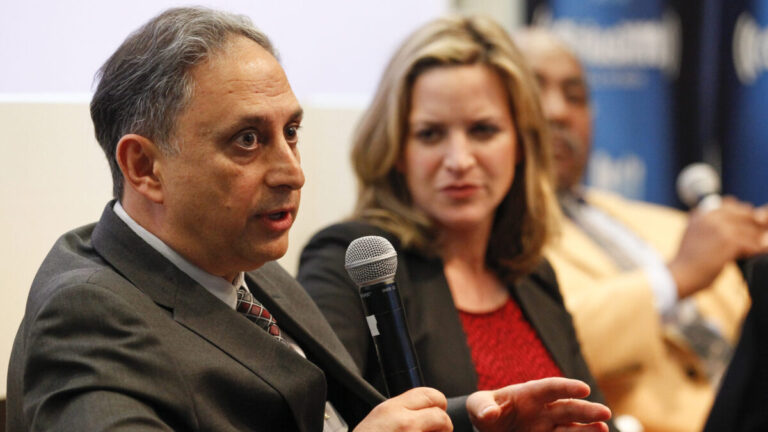Lonely at the Top: Few College Athletic Directors Are Women and People of Color
Why this matters
As national movements for racial justice and gender equity demand more representative leadership across society, senior decision-makers in college sports continue to be overwhelmingly White and male. Removing career barriers and adopting more equitable hiring practices could help college athletic directors look more like the increasingly diverse athletes they serve. But is the industry finally ready to change?
As a Black woman aspiring to become an athletic director, Renae Myles Payne knew that she faced an uphill career climb. But it wasn’t until she studied the lack of diversity among college athletic directors and sports administrators for her 2005 dissertation that Myles Pane realized just how steep the hill was.
In the National Collegiate Athletic Association’s Division I – home to the big-time football and men’s basketball programs that accounted for billions of dollars in annual revenue – nine out of 10 athletic directors were White. The same held true for their top deputies.
As for the handful of Black people who had advanced to senior leadership positions? Myles Payne personally interviewed four. Their feedback was blunt:
The odds of us getting jobs at the same rate as our White counterparts are very slim.
We will always be required to display our credentials and be 10 times better than our White colleagues.
Whether it is overt or covert racism, or neither, presidents and athletic directors tend to hire people who look like them.
Today, Myles Payne occupies one of those positions, working as the University of Miami’s senior associate athletic director and chief diversity officer. She says that some progress has been made since her time as doctoral student – but far less than she had hoped for.
“It was terrible back then,” Myles Payne says. “It’s stagnant now. There are still not a lot of opportunities [for women and people of color] to reach that decision-making chair.”
A new study conducted by the Global Sport Institute at Arizona State University reflects an ongoing lack of opportunity. Examining 385 athletic director changes across 248 NCAA Division I schools over a 10-year period from 2010 through 2019, the study found that:
- Incoming college athletic directors were overwhelmingly White (77 percent) and male (88 percent).
- Women and people of color made small gains over the decade, with the overall percentage of Black athletic directors rising from 17 percent to 19 percent and women from 8 percent to 12 percent.
- Asian-American and Latinx athletic directors also made gains, but combined they account for just 3 percent of people holding athletic director jobs.
- In no year were more than 12 women or fewer than 23 men hired.
- In every year but one, at least 30 White men were hired. By contrast, the number of Black men hired reached double digits (11) once.
- No Asian-American women or Latinas were hired in seven of the 10 years studied.
- Athletic directors of color were more likely than their White counterparts to have attained graduate and doctoral degrees, and women athletic directors were more likely to have attained those degrees than their male counterparts.
- The majority of women who were athletic directors had NCAA coaching experience, but the majority of their male counterparts did not.
- While the majority of all athletic directors had NCAA playing experience, women were more likely than men and Black men were more likely than White men to have been a NCAA athlete.
- Historically Black Colleges and Universities (HBCUs) accounted for 37 percent of the Black men and 36 percent of the Black women hired as athletic directors over the period studied.
Taken together, the study’s findings indicate that women and people of color in college sports administration continue to face career obstacles when compared to their White male counterparts – something that holds particularly true for women of color, with just 11 Black women, three Latinas, and two Asian American women hired as athletic directors.
Those impediments aren’t unique: other studies of college sports coaching, professional sports coaching and front office management, university administration, corporate America, and state and federal government repeatedly have found that White men disproportionately occupy senior leadership roles.
At a time when renewed national movements for racial justice and gender equity are demanding more representative leadership for a rapidly diversifying country, many within college sports are calling for the industry’s top decision-makers to look more like the athletes they serve, who increasingly are women and people of color.
But whether the industry can actually lower the barriers Myles Payne once studied remains to be seen.
“We have too many people in college sports making decisions based on things that they have never experienced,” she says. “More people who look like the students – who have similar situations and backgrounds – sitting at the table making decisions would help.
“On the football field, nobody thinks anymore about whether the quarterback of a college or [National Football League] team is Black. It’s normal. That is where we need to get to on the administrative side of college sports. Why can’t we have that same feeling of normalcy? What still makes it unusual?”
'We have a long way to go'
White male dominance of college sports has deep roots. For decades, schools and athletic departments were segregated by race and gender, with Black athletes and administrators largely confined to HBCUs and female athletes and administrators left to fend for themselves outside NCAA governance.
That changed from the late 1960s to early 1980s, as civil rights and gender equity movements and legislation gradually forced college sports to integrate on the field. Black athletes began to play against and alongside their White counterparts. Women’s teams and programs proliferated.
But administrative offices were a different story. Beyond HBCUs, athletic leaders of color remained exceedingly rare. In 1998, only nine of the 29 Black athletic directors in Division I worked at Primarily White Institutions (PWIs). One of them, Lee McElroy, told the Chronicle of Higher Education that he could predict what strangers at cocktail receptions would ask when they saw the words “American University” on his name tag.
“The first thing they say is, ‘Oh, are you a coach?’” said McElroy, the school’s athletic director from 1996 to 2000 and now athletic director at the University of Albany. “People can visualize a person of color as a coach.”
Meanwhile, female decision-makers were losing ground. In 1982, the NCAA completed what amounted to a hostile takeover of women’s college sports from the Association for Intercollegiate Athletics for Women, which had governed the area in the 1970s.
“We are making really slight progress, but it’s way too slow, and we have a long way to go. These issues are cultural and systemic and do not change overnight.” - Patti Phillips, Women Leaders in College Sports CEO
The aftermath was devastating. According to the Wall Street Journal, hundreds of female administrators lost their jobs or were demoted to middle-management positions within gender-unified athletic departments run by men. In 1972, more than 90 percent of women’s college sports programs were overseen by a female administrator; by 1990, that number had dropped to 15.9 percent, leading Donna Lopiano, then the women's athletic director at the University of Texas-Austin, to tell The New York Times that “sports is a flagrant example of discrimination against women.”
"It's wild here in the trenches,” Lopiano said at the time. “When a woman goes after a job, she hears: If you're young, you'll have child-bearing problems. If you have a family, you can't handle the time demands. If you're not a parent, you're homosexual.”
In addition to overt prejudice and bias, women and people of color looking to become college athletic directors were limited by a traditional conception of the role as a career capstone for successful football, basketball, or baseball coaches – who overwhelmingly tended to be White men.
Since the 1990s, that view has shifted. A boom in college sports revenues has moved leadership hiring away from former coaches with campus name recognition and toward administrative professionals with business and public relations training.
“The position has evolved, and you need a wide array of skills like a corporate CEO,” says Dr. Brandon Martin, athletic director at the University of Missouri-Kansas City and co-chair of the Black AD Alliance, a group of approximately 55 athletic directors formed in 2020 to promote leaders of color in Division I sports. “You can’t just say ‘I’m a fundraiser’ and be a good AD. No. You have to fundraise and put together a good marketing plan, understand student development and academic support, and have the people skills to work with so many different stakeholders on campus.”
Yet while the job has become more expansive, the pool of people working as athletic directors has not. Last year, The Institute for Diversity and Ethics in Sport (TIDES) at the University of Central Florida reported that 72.3 percent of Division I athletic directors were White men; 86.7 percent of Division I conference commissioners were White; and 76.3 percent of administrators at the NCAA’s headquarters were also White.
By contrast, just 10.3 percent of Division I athletic directors and 23.5 percent of NCAA senior leaders were Black, while 14.3 percent of Division I athletic directors and 49.6 percent of NCAA senior leaders were women.
When the University of Pittsburgh hired Heather Lyke as its athletic director in 2017, the school reportedly had to remove masculine pronouns from the statements it had prepared in advance – statements written with the assumption that a man would get the job, as had been the case for the previous 106 years.
“We are making really slight progress, but it’s way too slow, and we have a long way to go,” says Patti Phillips, the chief executive of Women Leaders in College Sports, an organization that works to develop and advance women into positions of power within college sports. “These issues are cultural and systemic and do not change overnight.”
'I felt a little left out'
When China Jude began working at University of the District of Columbia as a volleyball coach and athletic administrator in the mid-2000s, she quickly noticed that her boss, then-athletic director Harold Merritt, would leave the office early on Friday afternoons – and take the school’s compliance director with him.
“They would play golf,” says Jude, the Denver Broncos’ vice president of diversity, equity and inclusion. “I felt a little left out.”
Jude, a Black woman, wanted to move up in her career. "I knew I had to be able to network with individuals who don’t look like me, in social environments where you don’t see large numbers of Black and brown people,” she says. So she took golf lessons for eight weeks. “In private!” Jude says with a laugh. “I didn’t tell anyone in my office.”
Those lessons paid off when Jude later worked as an athletic director at Division II schools in Pennsylvania and New York. In both cases, she says, the sport “really opened doors for me to talk to people and cultivate alums by being in the clubhouse.”
“That’s the kind of thing we have to do as Black athletic administrators,” Jude says. “I knew the barriers, but I always felt that I would not let them exclude me from opportunities.”
For Jude, playing golf was a way into the “good old boy” networks of White people, mostly men, who occupy positions of power in college sports. According to LEAD1, an association that represents NCAA Football Bowl Subdivision athletic directors, 83 percent of presidents and chancellors at FBS schools in 2019 were White men; by contrast, just five FBS schools had women of color as presidents in 2020.
“The people in power in society are White males. That is who fundraising appeals are aimed at and what a president is thinking about when they need an athletic director." - Renae Myles Payne
That disparity doesn’t mean that people like Jude are deliberately being shut out of FBS athletic director positions. However, social scientists have found that in higher education and most other fields, people tend to hire candidates they know or candidates referred by people they know – a behavior that holds true for people of color as well as for Whites.
The same dynamic also can hold true for the search firms that schools increasingly use to help them identify and hire athletic directors. According to Stan Johnson, executive director of the Minority Opportunities Athletic Association (MOAA), firms place candidates into three groups.
“There are suspects, which are the 300 or so resumes they go out and get,” says Johnson, whose organization was formed in 2000 to increase participation and administrative opportunities for minorities in athletics. “There are prospects, who are the 15 people they interview on the phone to present names. And there are candidates, who are the three or four people you actually bring in for interviews.
“Candidates are the only people who can get the job. So the question is, are minorities part of that group?"
Too often, says Eric Coleman, senior associate athletic director for academics and student development at Florida Atlantic University, they are not. “It’s all about networking and getting into those social circles if you want those jobs,” he says. "I’m not saying a search firm won’t recommend or push a person of color to be hired. They will. But you have to be in their network.”
Social segregation isn’t the only career roadblock women and people of color have to overcome. While racial and gender bias are less prevalent than in the past, neither has been eliminated. In a 2015 survey of 529 women of color working in college sports coaching and administration, 44 percent said they had been discriminated against because of their race or ethnicity, while 60 percent said they had faced gender discrimination.
“We have women administrators who have to have security details because of death threats, who are called out on blogs and radio shows with people saying, ‘Hey, [expletive], get back in the kitchen,’” says Phillips, the CEO of Women Leaders in College Sports. “We have administrators on the football fields with their teams who have had officials come over and say, ‘No wives on the field.’ We’ve had other ADs – who traditionally give visiting ADs gifts for football games – give women tie racks. It’s just a culture that has been ingrained.”
In football, Black quarterbacks at all levels of the sport historically have been moved to other positions out of racial prejudice, making it less likely that they later will become quarterback coaches, offensive coordinators, and head coaches. Likewise, college coaches of color are more likely to be pigeonholed as “recruiters” – charged with enticing predominantly Black high school prospects to attend their schools and managing them once they arrive on campus – or to end up in particular assistant roles, like running backs or defensive backs coach, that are not considered training grounds for future head coaches.
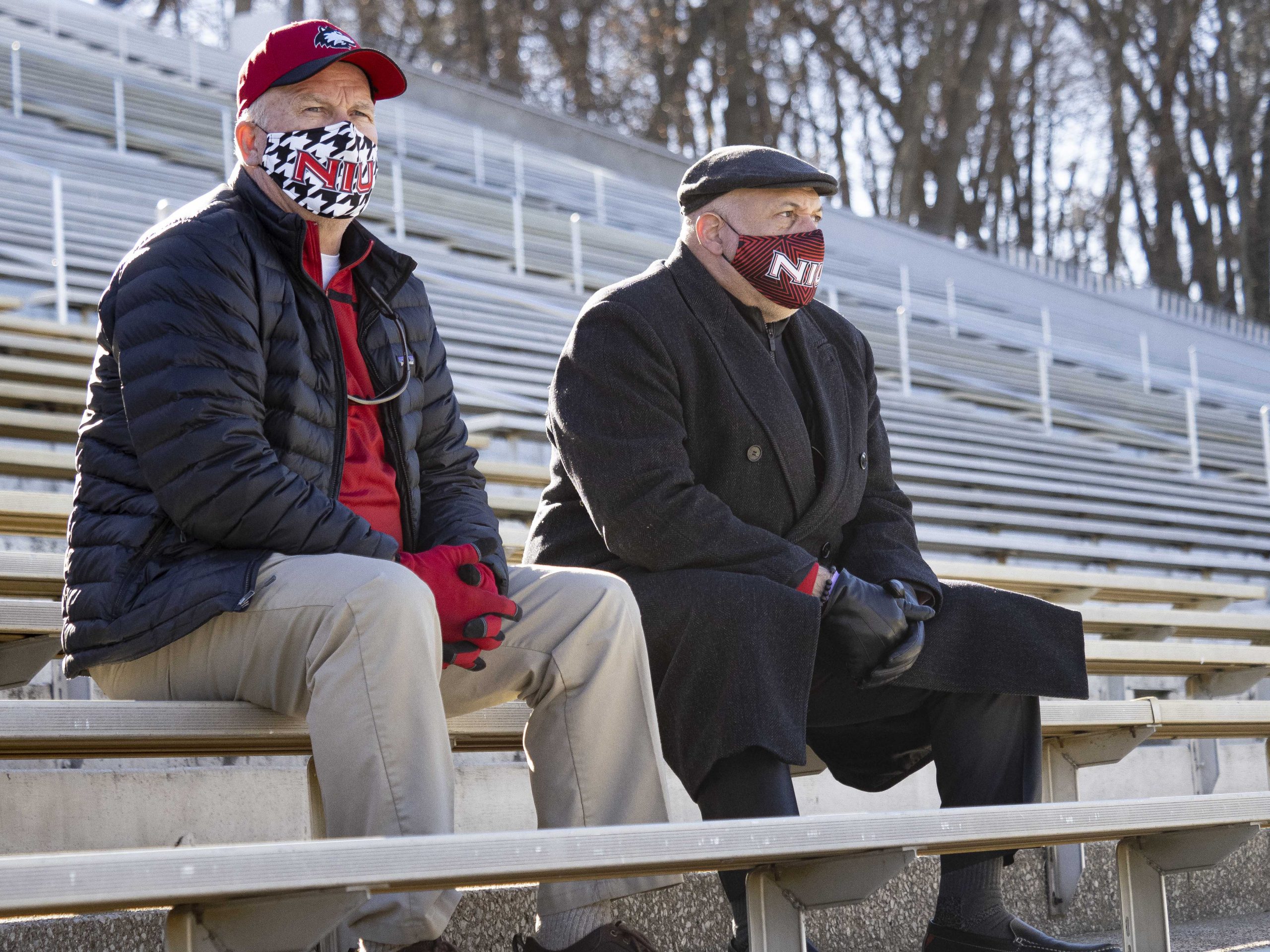
The result? A paucity of Black head coaches. A similar phenomenon occurs within athletic departments, where public-facing roles in finance and fundraising are seen as more important than student-facing roles in academic support and life skills, which North Carolina Central University athletic director Ingrid Wicker McCree once described as “similar to the caregiver roles in the fields of nursing, in which the day-to-day type of responsibilities are reminiscent of mothers or big sisters instead of those roles of power brokers or decision-makers within the organization."
According to LEAD1, people of color occupied just 20 percent of finance and fundraising roles at FBS schools in 2019. That isn’t new. In her 2005 dissertation, Myles Payne found that the highest concentration of Black people in college sports administration was in academic advising and counseling.
To avoid being typecast, Myles Payne once left a job overseeing academics for football players at San Jose State University, a Division I school, to work on athletic department budgeting at a much smaller Division II school.
“I was known as someone who could turn your football [grades] into a positive,” she says. “But when you do a good job at that, you’re going to be stuck. I had to put myself in a decision-making position, where on a daily basis I was deciding how we would steward and spend money.”
Yet even that kind of experience can be insufficient. Raising money is the lifeblood of college sports. Athletic donors tend to be wealthy White men. If a school looking for a new athletic director doesn’t believe that a woman or person of color can convince those men to give generously, it’s likely to hire a White man to do the job.
“The people in power in society are White males,” Myles Payne says. “That is who fundraising appeals are aimed at and what a [university] president is thinking about when they need an athletic director to be the face of a new capital campaign. Who will those donors trust to steward their gifts?
“I’ve been in a room where a president asked me not to apply for a job, because he knew his school’s donors would not be receptive to me.”
'They could be the model'
Shortly after video of George Floyd’s murder began to spread on social media, Northern Illinois University athletic director Sean Frazier’s phone rang. Tom McMillen, a former member of Congress and the head of LEAD1, the association for FBS athletic directors, was on the line.
Other college sports organizations and entities were releasing public statements condemning racism and calling for change. Should LEAD1 follow suit?
Frazier advised against it. “Let’s do something,” he said.
McMillen agreed. Last January, the association released a white paper – created with input from more than two dozen college sports leaders who are women and/or people of color, including Jude and Myles Payne—with a list of 10 recommendations for how college sports can diversify its senior decision-makers.
For Frazier, the topic was overdue. And personal. One of the few Black athletic directors in the FBS, he has spent his 30-plus years in college sports both preaching and embodying the value of diverse leadership: as an assistant football coach, a multicultural affairs liaison, and an assistant athletic director at the University of Maine; as an athletic director at three smaller schools in Massachusetts and New York; and as a deputy athletic director at the University of Wisconsin.
Northern Illinois is the only FBS school with a Black athletic director, a Black football coach, and a Black men’s basketball coach. “We’re it!” Frazier says. “And we have a White woman [university president Lisa Freeman] as our boss.”
Frazier says his passion for diversity and inclusion can be traced back to his days as a football player at the University of Alabama.
“We had Black and White players working together to win championships,” he says. “It’s the most diverse and most productive team I’ve ever seen – the reason Fortune 500 companies want to hire college athletes is because they are used to working with different people from different backgrounds under huge amounts of stress and adversity to reach success.
“The NCAA, its member institutions, they could be the model for diversity and inclusion in this country. Economic diversity, spiritual diversity, not just racial, but all the things that are different about us. By not harnessing that, we’re missing the boat.”
In corporate America – which also has disproportionately few women and people of color in decision-making roles – the value of diverse leadership is becoming increasingly apparent. In the wake of the racial and social justice movements that arose across the United States last summer, college sports may be having a similar awakening, with the NCAA committing to advancing racial equity and many conferences pledging to be more inclusive.
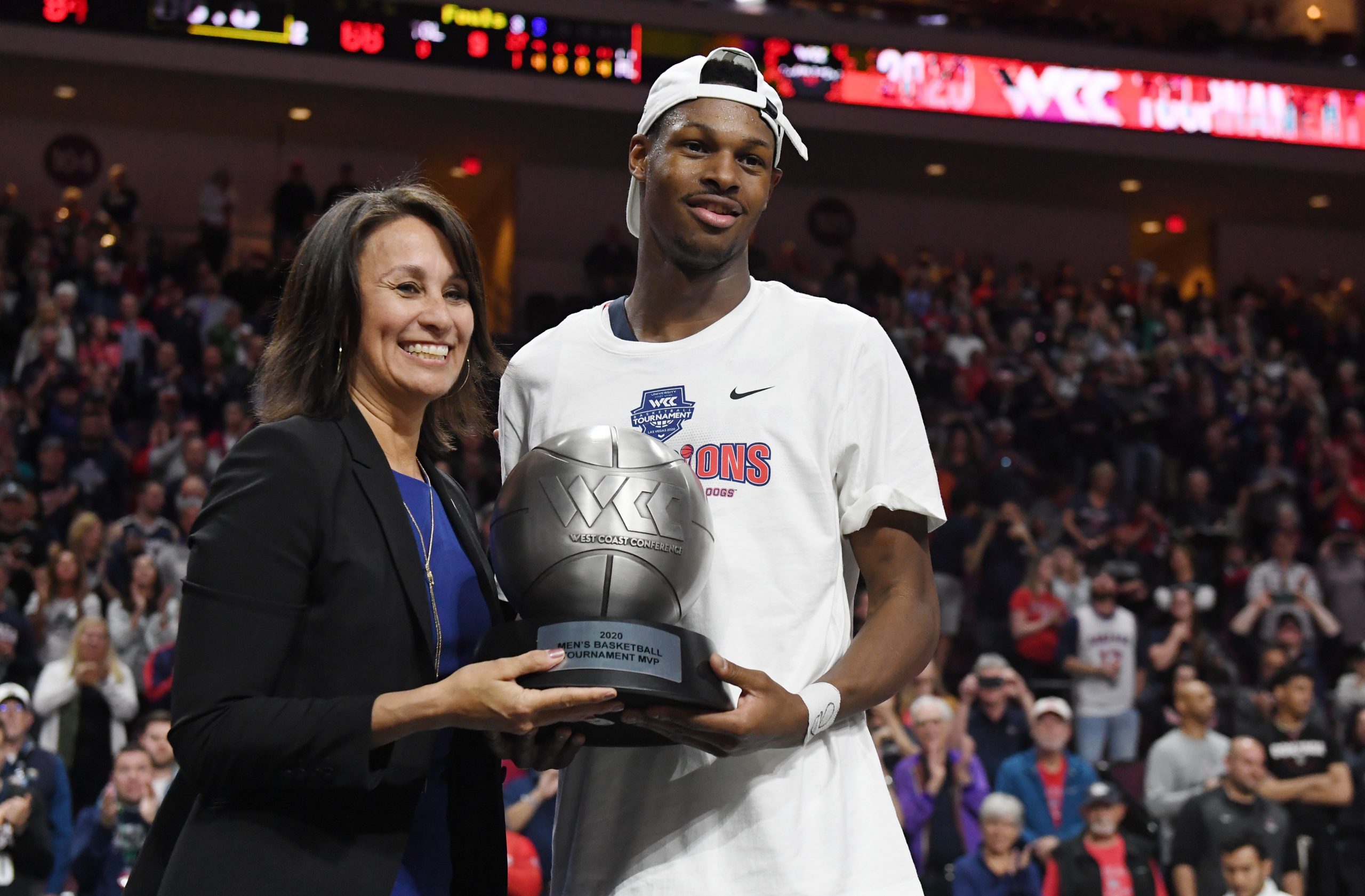
Frazier and others say that transforming those promises into a more diverse set of college athletic directors will take sustained action in three key areas:
1. Purposefully developing and advancing talent: According to Johnson, MOAA’s executive director, the path to “sitting in the [athletic director] chair” consists of a series of career steps. Each one requires mentoring, support, and trust from people already in positions of authority. "The old boy system pulls people through,” he says. "Are minorities being mentored, networked, coached through that process? Is that stamp being put on them by the people in charge that this is the next person? And who are the champions out there helping minorities? This is not a thing they can do by themselves.”
2. More equitable hiring processes: In the National Football League, the “Rooney Rule” requires teams to interview qualified women and candidates for color for senior leadership positions. While the rule has not led to a dramatic increase in the overall number of Black head coaches in the league, it has created opportunities for many individuals.
Within college sports, the NCAA can’t legally mandate hiring rules across a vast array of public and private schools located in different states. But individual institutions, conferences, and even state lawmakers can require more diverse candidate searches. Last year, the West Coast Conference adopted a “Russell Rule,” named after Hall of Fame basketball player and civil rights advocate Bill Russell, that requires that candidates for every opening for athletic director, senior administrator, head coach or full-time assistant coach within the league to include a member of a "traditionally underrepresented community.”
West Coast Conference commissioner Gloria Nevarez, the first Latina to serve as a Division I conference commissioner, has said that she hopes other conferences will follow suit. So have the National Association of Basketball Coaches and the Women's Basketball Coaches Association.
“The idea is to have schools do what coaches do when they look for athletes,” Myles Payne says. “They don’t care about Black, White, blue, gold. They want the best person, and they turn over every rock to find them. But schools don’t do that when looking for [athletic] administrators. They stick to the circles they know.”
3. Resources and incentives: The Knight Commission on Intercollegiate Athletics, a college sports reform group, has asked the College Football Playoff to donate 1 percent of its nearly $500 million in annual revenues to support college sports diversity initiatives. “None of that money is going toward any kind of national programs to address what all leaders agree is a shortcoming,” says Amy Perko, the commission’s CEO.
LEAD1 goes further, recommending that contracts for athletic directors and conference commissioners include financial bonuses for hiring and promoting women and people of color. In the late 1980s and early 1990s, the association’s white paper notes, the University of Michigan implemented a diversity program that provided increased funding to departments that hired and advanced diverse candidates; seven years later, faculty of color had increased by 55 percent, while faculty of color in leadership positions had increased by 79 percent.
When Myles Payne worked in academic support, she says, she didn’t believe that coaches should receive bonuses for athletes getting better grades. “But it worked!” she says. “I feel the same way about diversity. You should be doing it regardless, but, at the end of the day, money matters to people. It is an incentive for them to do better.”
Can college sports do better when it comes to having senior leaders who look more like the athletes on the field – and the quickly diversifying country all around them? Frazier believes the industry has little choice but to change.
“We are here for our students,” he says. “You can’t forget that. If you can’t relate to them, if you are not listening to social media and to young people, you are at a disadvantage. Race, class, human rights, injustice are permeating throughout what they are saying. Institutions that do not have that in their leadership model will be like the dodo bird or the dinosaurs. They will die out."
Monthly Issue
The Administration of Change
Higher education is an environment ripe for discovery, new knowledge, and innovation. However, the role of Athletic Director at university levels still reflect the commonly seen disparities between representation of race, gender, experience, and perhaps most ironically - education level.
Beyond Black and White, what are the underlying factors for the still murky ‘pipeline’ to administrative leadership in U.S. college sport?


